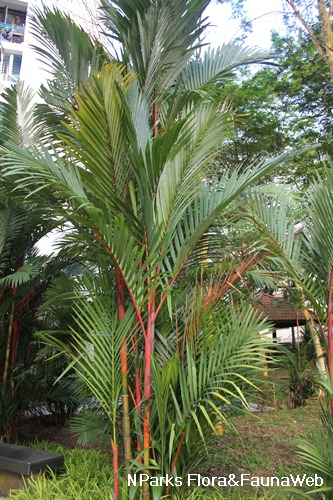
Back
Cyrtostachys renda Blume
| Family Name: | Arecaceae (Palmae) |
| Synonyms: | Cyrtostachys lakka Becc. |
| Common Name: | Sealing Wax Palm, Lipstick Palm, Pinang Rajah, Maharajah Palm, Red Sealing Wax |
Cyrtostachys renda, also known as Sealing Wax Palm, is a critically endangered native palm with clustering habit. It can reach up to 20 m tall and have striking bright red crownshaft. This palm is featured in the Singapore Botanic Gardens’ logo.
Name
Classifications and Characteristics
| Plant Division | Angiosperms (Flowering Seed Plants) (Monocotyledon) |
|---|---|
| Plant Growth Form | Palm (Clustered Habit) |
| Lifespan (in Singapore) | Perennial |
| Mode of Nutrition | Autotrophic |
| Maximum Height | 12 m |
Biogeography
| Native Distribution | Thailand, Peninsular Malaysia, Singapore, Sumatra, and Borneo. |
|---|---|
| Native Habitat | Terrestrial (Primary Rainforest, Riverine, Freshwater Swamp Forest), Shoreline |
| Preferred Climate Zone | Tropical |
| Local Conservation Status | Native to Singapore (Critically Endangered (CR)) |
Description and Ethnobotany
| Growth Form | A clumping palm, up to 15 (– 20) m tall, with characteristically bright red leaf sheaths (each about 60 cm long) around the stems. Naturally growing in swamps and highly tolerant of flooding. Cultivated as an ornamental palm for its attractive bright red stems and leaf stalks. |
|---|---|
| Foliage | Leaves, measuring about 1.5 m long and 0.6 m wide, have bright red stalks and mid-ribs and are pinnate and alternately-arranged. Each leaf consists of leaflets that are boat-shaped, slightly grey on the underside and about 45 cm long and 4 cm wide. |
| Crown Shaft | Crown shaft is distinctively red in colour. |
| Flowers | Its branched flowering shoot is first green before turning to red, with two large spathes (modified leaves) that are 60 cm by 60 cm. Flowers are pollinated by bees. |
| Fruit | Its tiny one-seeded fruits are ellipsoidal in shape, 8-10 by 4-5 mm. |
| Habitat | It grows in lowland peat swamp forest, especially in coastal areas. |
| Associated Fauna | Its flowers are pollinated by insects. The fruits are eaten by birds. It is the host-plant for the moth species Parasa lepida. |
| Cultivation | Preferring rich loamy soil, that has to be kept moist as this palm is not drought-tolerant, quickly withering with water stress. Suitable for garden, parks and roadside planting. Also can be grown at the edges of ponds or reservoirs as it is tolerant of water-logged conditions. The outer wood of the stem is hard and used to make darts. This palm is also the symbol of the Singapore Botanic Gardens. |
| Etymology | Greek cyrtos, curved, Greek, stachys, spike, referring to the curved inflorescence, |
| Ethnobotanical Uses | Others: The hard outer wood of the stem is used to make darts. This palm is the symbol of the Singapore Botanic Gardens. |
Landscaping Features
| Landscaping | Its bright scarlet leaf sheaths make this palm one of the most attractive of palms. It is an ornamental palm suitable for gardens, parks, roadsides and around the edges of ponds and water bodies. |
|---|---|
| Desirable Plant Features | Ornamental Stems, Ornamental Foliage, Ornamental Form |
| Landscape Uses | Suitable for Roadsides, General, Parks & Gardens, Small Gardens, Hedge / Screening, Riverine, Pond / Lake / River, Marsh / Bog, Focal Plant |
Fauna, Pollination and Dispersal
| Fauna Pollination Dispersal Associated Fauna | Bird-Attracting (Fruits), Caterpillar Moth Food Plant |
|---|---|
| Pollination Method(s) | Biotic (Fauna) (Insects (Bee)) |
| Seed or Spore Dispersal | Biotic (Fauna) |
Plant Care and Propagation
| Light Preference | Semi-Shade, Full Sun |
|---|---|
| Water Preference | Moderate Water, Lots of Water |
| Plant Growth Rate | Moderate |
| Rootzone Tolerance | Fertile Loamy Soils, Waterlogged Soils (Drains Site, Does not Drain Site), Moist Soils, Heavy Clay Soils |
| Propagation Method | Seed, Sucker, Division |
Foliar
| Foliage Retention | Evergreen |
|---|---|
| Mature Foliage Colour(s) | Green |
| Foliar Type | Compound (Odd-Pinnate) |
| Foliar Arrangement Along Stem | Alternate |
| Foliar Attachment to Stem | Petiolate |
| Foliar Shape(s) | Palm Fronds (Pinnate / Feather) |
| Leaf Area Index (LAI) for Green Plot Ratio | 4.0 (Palm - Cluster) |
Non - Foliar and Storage
| Trunk Type (Palm) | Clustering Habit, Aboveground |
|---|
Floral (Angiosperm)
| Flower & Plant Sexuality | Unisexual Flowers , Monoecious |
| Flower Colour(s) | Green, Red, Cream / Off-White |
|---|
| Flower Grouping | Cluster / Inflorescence |
| Flower Location | Axillary |
Fruit, Seed and Spore
| Mature Fruit Colour(s) | Black |
|---|---|
| Fruit Classification | Simple Fruit |
| Fruit Type | Fleshy Fruit , Non-Accessory Fruit |
Image Repository
Others
| Master ID | 1325 |
|---|---|
| Species ID | 2618 |
| Flora Disclaimer | The information in this website has been compiled from reliable sources, such as reference works on medicinal plants. It is not a substitute for medical advice or treatment and NParks does not purport to provide any medical advice. Readers should always consult his/her physician before using or consuming a plant for medicinal purposes. |

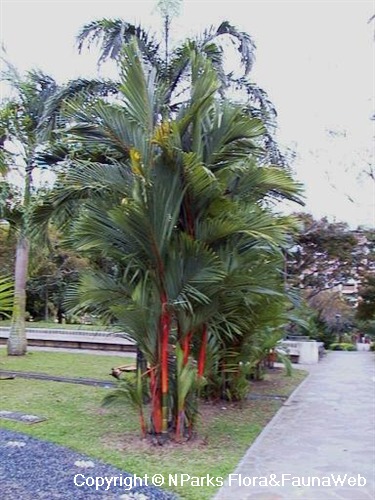
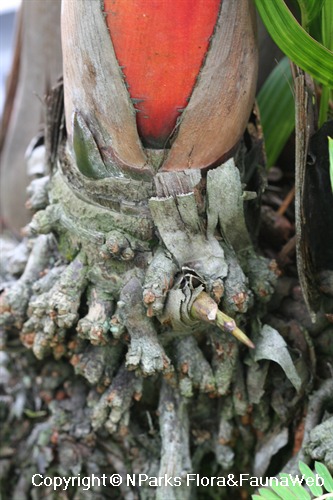
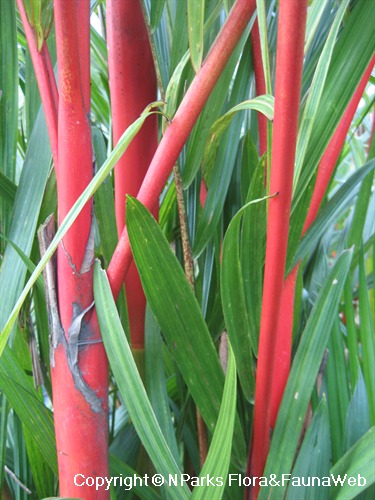

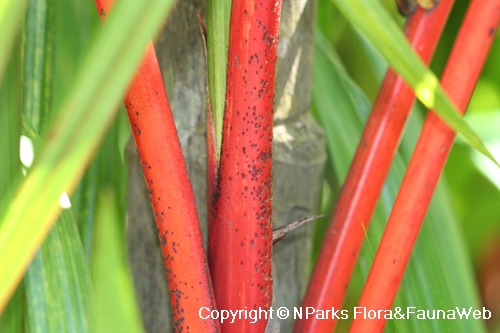
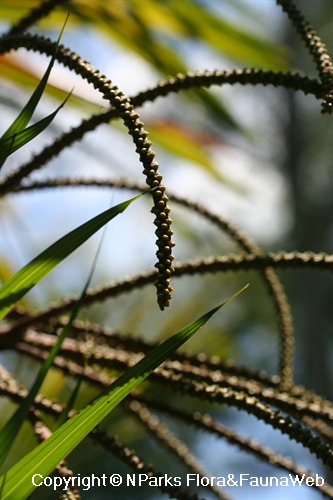
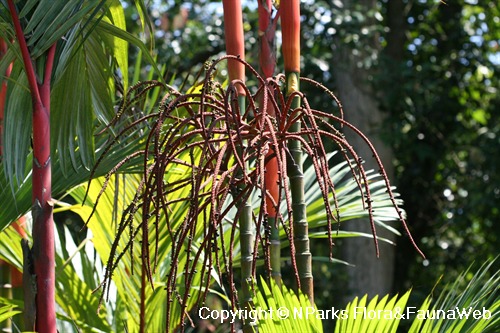
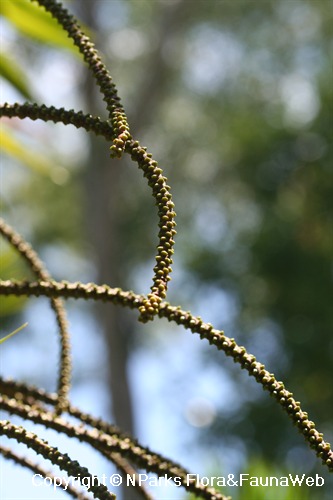
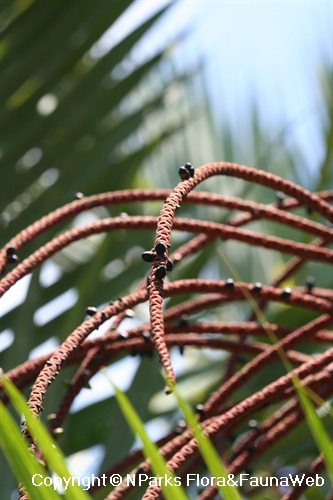
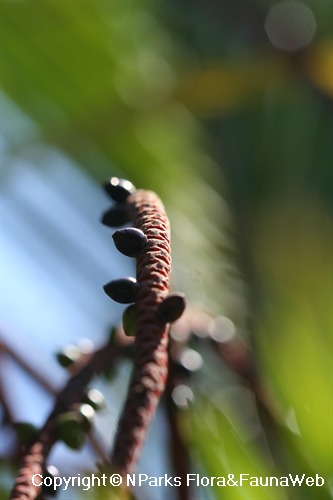
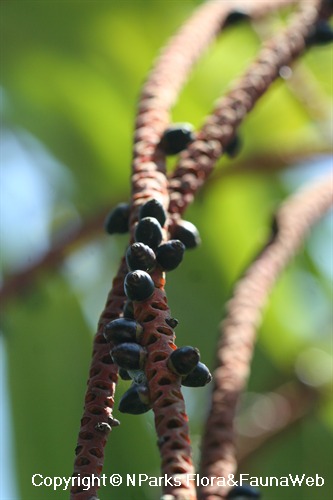
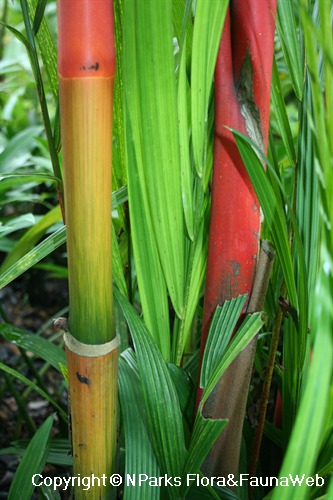
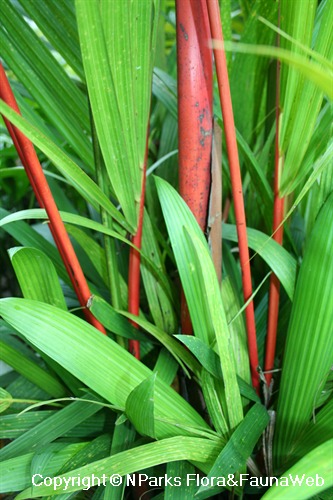
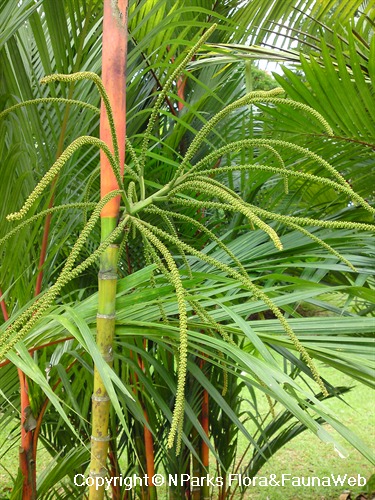
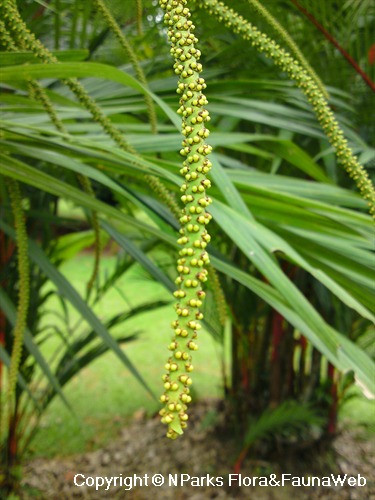
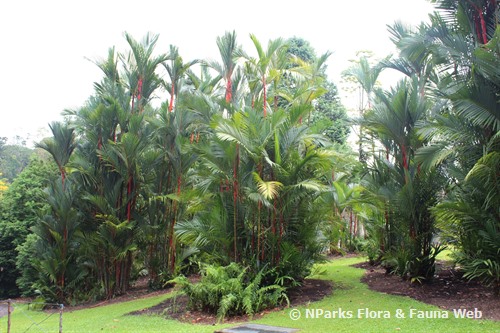
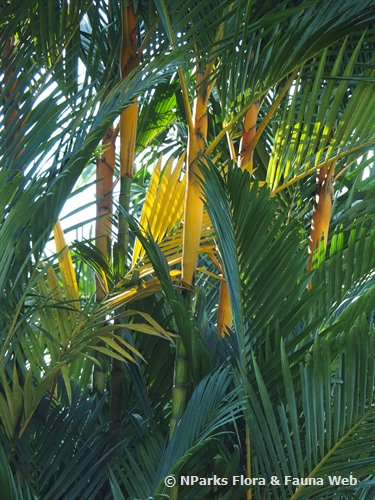
_lowres.jpg)